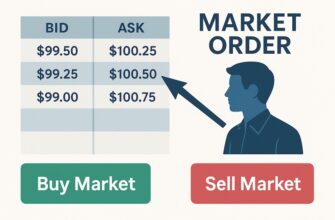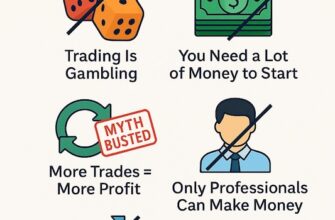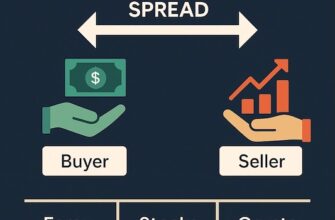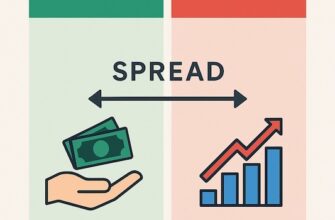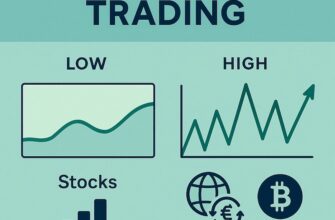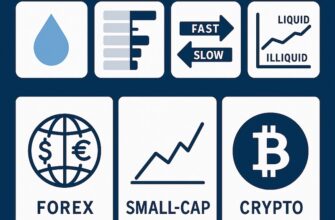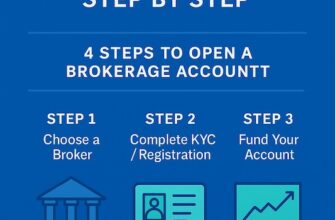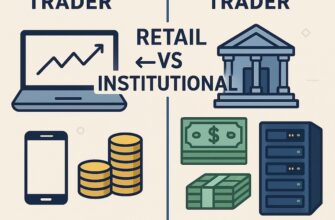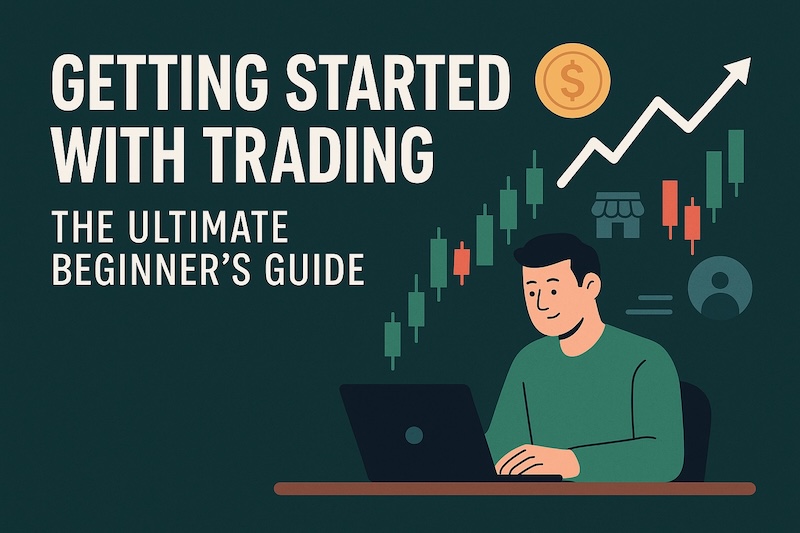
Trading attracts millions of people each year. Some are drawn by the potential of financial independence, others by the intellectual challenge of analyzing markets. Yet statistics show that most beginners lose money in their first year. The reasons are not mysterious: lack of preparation, misunderstanding of risk, blind trust in myths, and jumping into markets without structure.
This guide is designed to fix that. It will give you a complete roadmap to trading basics — what trading actually is, how financial markets work, the difference between trading and investing, how bid/ask pricing and spreads affect every trade, and how liquidity and volatility define opportunities. We’ll also cover brokers, accounts, and the most common mistakes beginners make. Each section links to detailed guides in the Getting Started cluster, so you can go deeper where needed.
- What Are Financial Markets?
- Trading vs Investing: Two Different Paths
- Types of Assets You Can Trade
- Who Are the Players?
- Bid, Ask, and the Spread: The Hidden Cost of Trading
- Liquidity: Why It Matters for Execution
- Volatility: Opportunity and Danger
- How to Open a Brokerage Account
- Common Myths That Mislead Beginners
- Learning Roadmap for Beginners
- FAQ
- 1. How much money do I need to start trading?
- 2. Should I trade forex, stocks, or crypto first?
- 3. Is demo trading necessary?
- 4. Why do spreads and liquidity matter?
- 5. Are trading myths really dangerous?
- Conclusion
What Are Financial Markets?
Financial markets are the backbone of global trading. They connect buyers and sellers of currencies, company shares, commodities, and crypto. Their main functions:
- Price discovery — markets set fair value through supply and demand.
- Liquidity — markets allow participants to enter/exit positions.
- Access to capital — companies, governments, and traders all use markets to move money.
Markets are not abstract: every trade you place is matched with another participant.
👉 Read next: What Are Financial Markets?
Trading vs Investing: Two Different Paths
Many beginners confuse trading with investing. They overlap but require different skill sets.
| Aspect | Trading | Investing |
|---|---|---|
| Time horizon | Short-term (minutes to weeks) | Long-term (years/decades) |
| Goal | Capture price swings | Compound wealth over time |
| Risk control | Active, tight stops | Diversified portfolio |
| Tools | Charts, order flow, volatility | Valuations, fundamentals |
Key takeaway: Trading is about managing risk actively; investing is about patience and compounding.
👉 Explore: Trading vs Investing
Types of Assets You Can Trade
Choosing an asset class defines your trading experience.
- Forex: the most liquid market, open 24/5. Small moves can be magnified by leverage.
- Stocks: ownership in companies; suited to both short-term speculation and long-term investing.
- Crypto: volatile and accessible 24/7; opportunities come with higher risks.
- Commodities: gold, oil, agricultural products — often driven by supply/demand shocks.
- Indices & ETFs: baskets of assets offering diversification.
👉 Read: Types of Assets — Forex, Stocks, Crypto, Commodities
Who Are the Players?
Markets are ecosystems. Participants include:
- Retail traders (you and me, small accounts).
- Institutional traders (banks, funds with huge liquidity).
- Market makers (provide liquidity, quote bid/ask spreads).
- Corporations (hedging risk).
- Governments and central banks (intervening in currency and bond markets).
Understanding who moves price helps set realistic expectations.
👉 Learn more: Retail vs Institutional Traders
Bid, Ask, and the Spread: The Hidden Cost of Trading
Every trade crosses a spread.
- Bid: the price buyers are willing to pay.
- Ask: the price sellers want.
- Spread: the difference = your immediate cost.
Example: If EUR/USD is quoted 1.1000/1.1002, the spread is 2 pips. A buy trade starts at a -2 pip loss instantly.
👉 Bid vs Ask Price — Explained
👉 Spread in Trading — Complete Guide
Liquidity: Why It Matters for Execution
Liquidity = the ease of buying/selling without moving price.
- High liquidity: tight spreads, low slippage (major FX pairs, large-cap stocks).
- Low liquidity: wider spreads, higher slippage (exotic pairs, penny stocks).
Low liquidity often traps beginners who don’t understand why orders slip.
👉 What Is Liquidity in Trading?
Volatility: Opportunity and Danger
Volatility = how much price moves in a given time.
- High volatility: more profit potential and higher risk.
- Low volatility: safer but slower-moving.
Beginners often chase volatility, but without risk rules, it quickly destroys accounts.
👉 What Is Volatility? Explained Simply
How to Open a Brokerage Account
Your broker is your gateway to the market. Focus on:
- Regulation (FCA, ASIC, CFTC, ESMA).
- Costs (spreads, commissions).
- Platform (MT4, cTrader, TradingView).
- Support & withdrawals.
Start with a demo, then transition to live only when consistent.
👉 How to Open a Brokerage Account — Step by Step
Common Myths That Mislead Beginners
Trading is full of myths that destroy accounts.
- “Trading is easy money.” Wrong: it’s a skill-based profession.
- “Indicators predict the future.” They summarize past price, nothing more.
- “The more trades, the more profit.” Overtrading kills accounts.
- “You need a big account to start.” You need discipline, not just capital.
👉 Read: Most Common Trading Myths Debunked
Learning Roadmap for Beginners
- Learn the basics → Financial Markets
- Understand the difference → Trading vs Investing
- Master execution costs → Bid vs Ask, Spread Explained
- Study conditions → Liquidity, Volatility
- Open access → Open a Brokerage Account
- Avoid traps → Trading Myths
FAQ
1. How much money do I need to start trading?
There is no fixed number. The key is risk management: never risk more than 1–2% of your capital per trade.
2. Should I trade forex, stocks, or crypto first?
Pick one market that fits your schedule and learning capacity. Many start with forex majors or large-cap stocks.
3. Is demo trading necessary?
Yes. It allows you to learn execution without risking real money. Move to live trading only after consistent demo results.
4. Why do spreads and liquidity matter?
Because they directly affect your cost and execution. Wider spreads = higher cost; low liquidity = higher slippage.
5. Are trading myths really dangerous?
Yes. Believing in “easy money” or “secret indicators” leads to poor decisions and fast losses.
Conclusion
Trading is an exciting journey, but it is also demanding. By understanding how markets work, what spreads and liquidity mean, and how to choose a broker, you build a solid foundation. The Getting Started cluster provides everything you need — from financial markets to myths to avoid.
Your next step: dive into the linked guides and build your own structured learning path.

